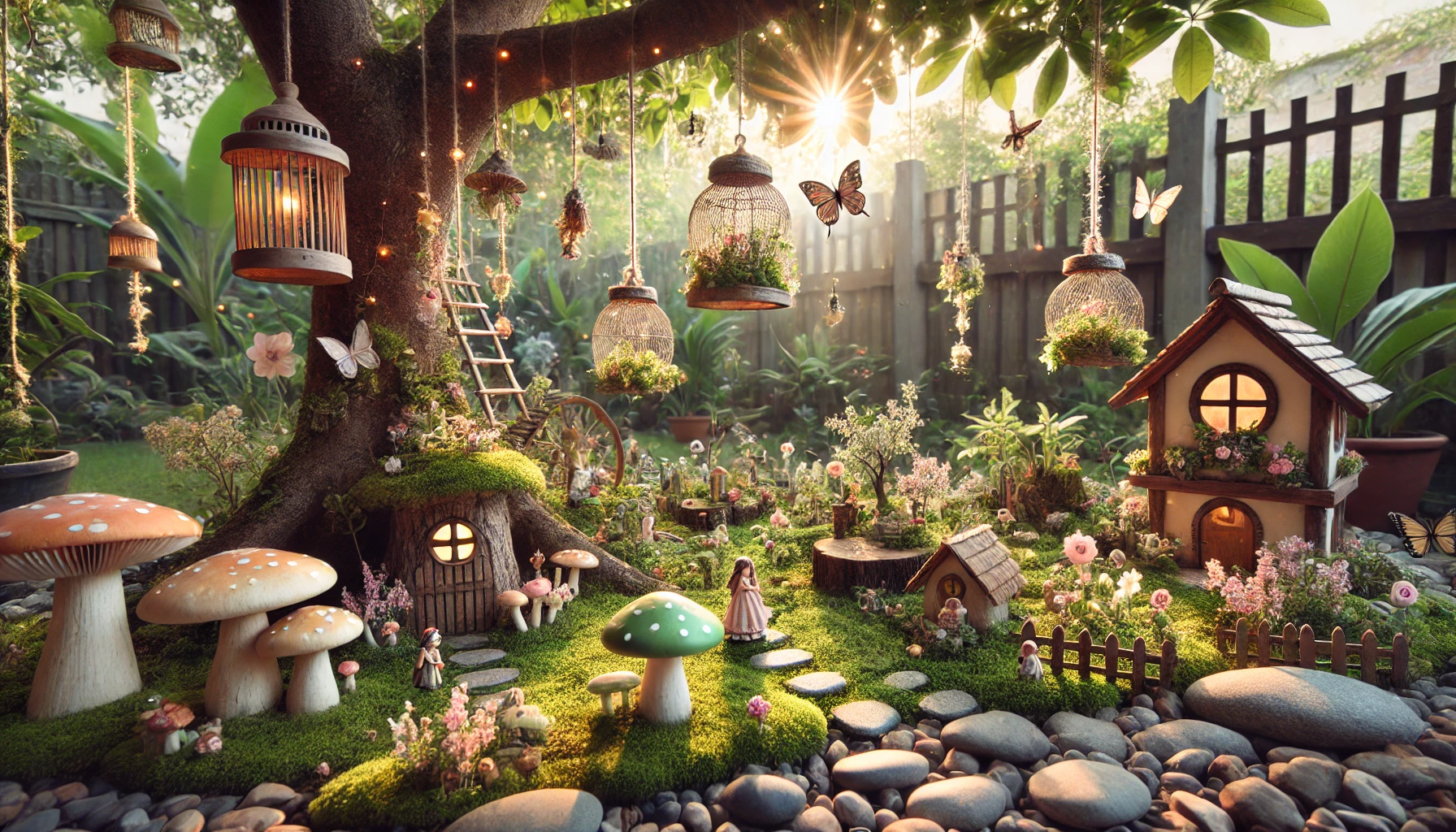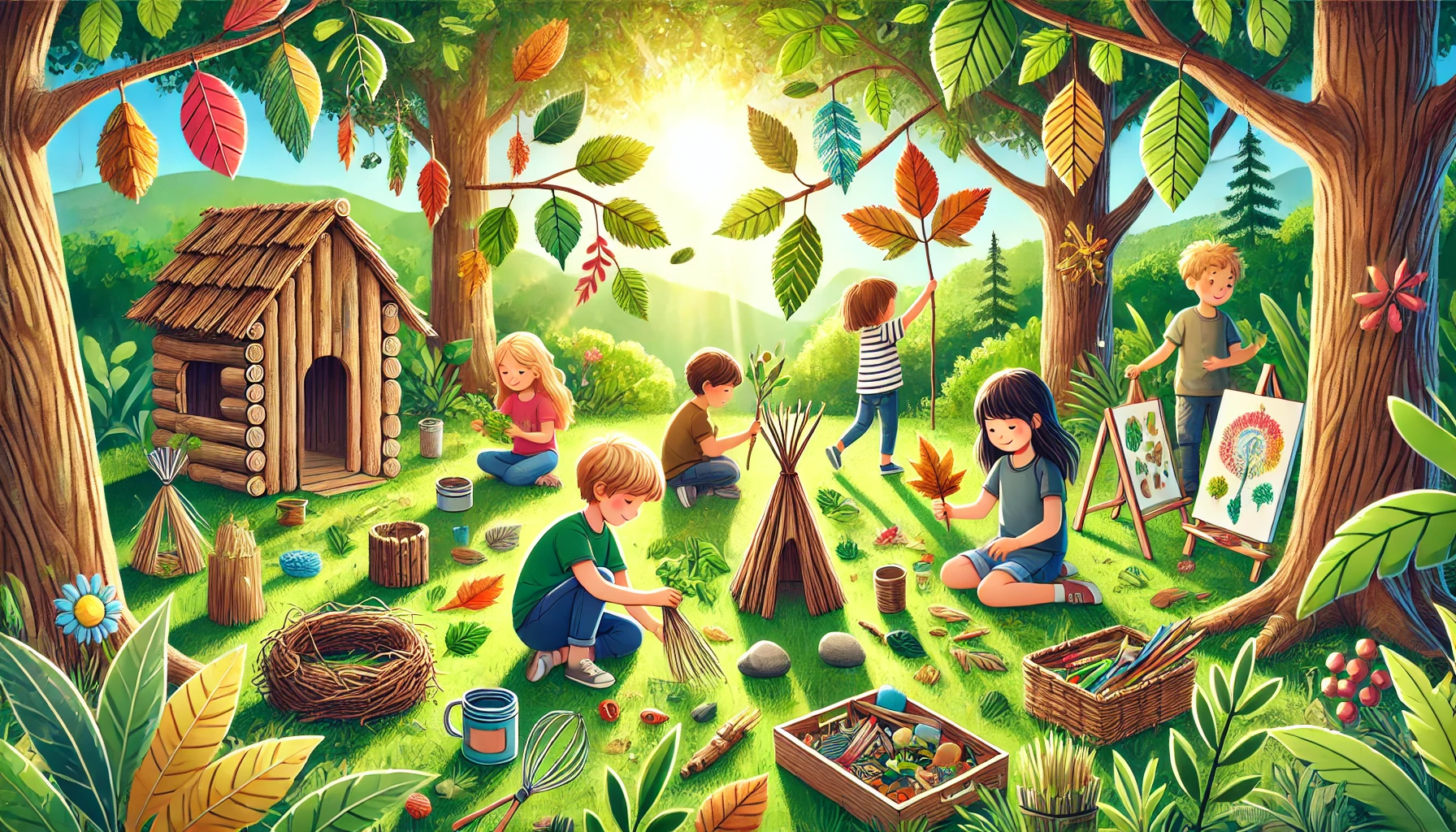Fairy gardens have a way of sparking curiosity. Something about their tiny doors, miniature bridges, and mossy hideaways makes people stop and stare, wondering if something magical might actually be living there. These little gardens aren’t just decorations—they create a story. And the best part? Building one isn’t just a fun project. It’s a chance to spend time together, to be creative, and to turn a simple corner of your yard into a place full of wonder.
Building a backyard fairy garden isn’t just about arranging tiny houses and scattering glitter. It’s about designing a space that invites imagination. Every plant, every stone, every hidden detail adds to the charm. Whether you’re doing this with kids, a partner, or a group of friends, the process can be just as rewarding as the final result.
Choosing the Perfect Spot
A fairy garden needs more than just a patch of dirt. It needs a space that feels tucked away, like a secret waiting to be found. Look for a corner in your yard that’s a little out of the way but still easy to visit. Somewhere with shade and dappled sunlight works best—too much sun, and delicate plants might struggle.
Things to Consider When Picking a Location
- Protection from wind and rain – If your yard is open, find a spot near a tree or a fence to keep your fairy garden safe from strong winds and heavy rain.
- Easy to access – A garden tucked deep into a bushy area might be charming, but if it’s too hard to reach, you won’t enjoy it as much.
- Room to grow – Fairy gardens tend to expand over time. A small area is fine to start, but leave space for future ideas.
- Natural elements – If there’s already a tree root, a hollow log, or a large rock, use it. These features add character and make the garden feel like it belongs there.
Designing Your Fairy Garden
Once you have your spot, it’s time to plan how it will look. Fairy gardens don’t need strict rules, but a little planning helps keep them from looking like a random pile of miniatures.
Picking a Theme
Not all fairy gardens look the same. Some are wild and mossy, while others have neat little fences and carefully arranged paths. Choosing a theme makes it easier to pick decorations and plants.
- Woodland Hideaway – Think moss, ferns, tiny mushrooms, and rustic wooden houses.
- Enchanted Village – A small collection of fairy cottages with pebble pathways and tiny gardens.
- Magical Ruins – Broken pottery, overgrown plants, and tiny crumbling stone walls create an ancient feel.
- Water-Themed Haven – A tiny pond, a small bridge, and plants that love moisture make a peaceful retreat.
Mapping Out the Layout
Before adding anything, take a step back and look at your space. Place a few stones, twigs, or temporary markers to test different layouts.
- Main features first – If you have a large rock, tree root, or decorative house, place that first.
- Pathways and open spaces – Leave room for small trails, resting spots, or even a tiny “town square.”
- Mix heights and textures – Layer taller plants in the back, shorter ones in the front, and mix materials to make it look natural.
Choosing Plants for a Fairy Garden
Plants bring the fairy garden to life. They set the scene, add color, and make everything feel like part of nature.
Best Plants for a Fairy Garden
- Moss – Soft, low-growing, and perfect for covering fairy-sized “lawns.”
- Thyme – A creeping herb that looks like tiny bushes.
- Baby’s Tears – Small, delicate leaves that grow thick and lush.
- Succulents – Low maintenance and great for drier gardens.
- Miniature Ferns – Add a wild forest look.
Stick to plants that stay small. Anything that grows too big will take over the space quickly.
Keeping Plants Healthy
- Water gently – A heavy spray can knock over tiny decorations. Use a misting bottle for delicate plants.
- Trim when needed – If plants start to take over, cut them back to keep everything balanced.
- Check sunlight needs – Too much sun can dry out moss, while some plants need full sunlight. Choose plants that match your garden’s light conditions.
Creating Fairy-Sized Details
The details make the magic real. A house by itself looks nice, but a house with a stone path, a tiny bench, and a lantern feels alive.
DIY Fairy Garden Decorations
- Miniature pathways – Use pebbles, bark chips, or tiny bricks to make winding paths.
- Tiny fences – Craft a fence from twigs and glue them together with twine.
- Fairy doors – Attach a small wooden door to a tree trunk to make it look like someone lives there.
- Natural furniture – A small piece of bark can be a table, acorn caps can be bowls, and flat stones can be seats.
- Hidden details – Tuck a tiny ladder against a tree, place a little swing under a branch, or hide a miniature book on a bench.
Making It Feel Magical
Fairy gardens should feel like they have stories hiding in them. Think about who might “live” there and add little details to match.
- A tiny mailbox – Place a small wooden mailbox near a house.
- A fairy tea party – Set up a tiny table with acorn cap teacups.
- A hidden treasure – Bury a little glass gem in the soil, peeking out like a forgotten fairy crystal.
- A wishing well – Use a small cork, some twigs, and a bit of string to create a miniature well.
Soft solar lights or glow-in-the-dark stones can also add a magical glow at night.
Caring for Your Fairy Garden
Once built, a fairy garden needs a little upkeep. But since it’s small, maintenance doesn’t take much time.
- Keep it tidy – Remove fallen leaves, trim plants, and adjust decorations if they shift.
- Watch for pests – Small bugs like to hide in damp areas. If needed, use a gentle, natural repellent.
- Refresh the magic – Swap out decorations seasonally or add new details over time.
A fairy garden isn’t meant to be a one-time project. Let it change and grow. If a plant takes over, trim it back or replace it. If a decoration breaks, turn it into part of the story—maybe a fairy’s home was struck by a storm, and now there’s a tiny repair shop nearby.
Final Thoughts
Building a backyard fairy garden is more than just a fun activity. It’s a way to bring people together, to create something unique, and to let imagination shape the space. It doesn’t have to be perfect. In fact, the best fairy gardens are the ones that look a little wild, like they’ve been there forever.
As you add details and watch your garden grow, you’ll start to notice something. The more time you spend in that little space, the more it feels like anything could happen there. And maybe, just maybe, something magical already has.




